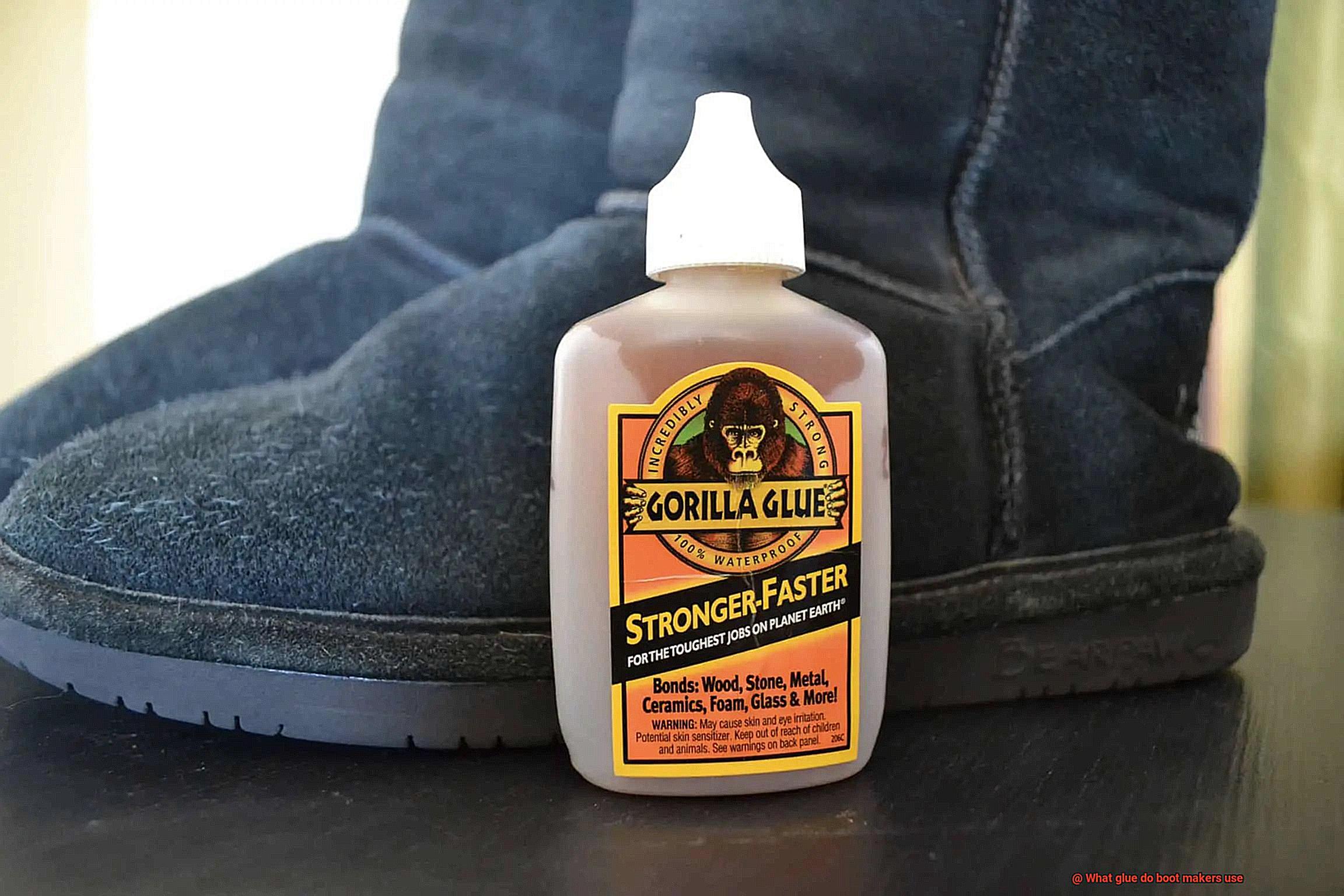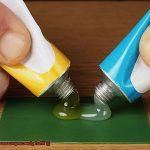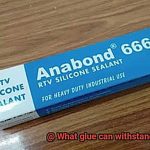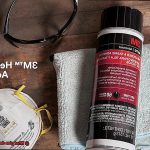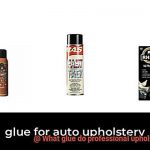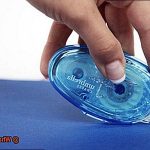Have you ever stopped to think about the glue that holds your favorite boots together?
It may not be the first thing that comes to mind when you slip them on, but trust me, it’s a big deal. Boot makers know that if they want their creations to withstand the test of time (and our wild adventures), they need the right glue for the job.
So, let’s take a peek behind the scenes and discover the secret sauce that keeps our boots intact through thick and thin. From humble workbenches to bustling factories, we’ll explore the different types of glue boot makers rely on to create these badass footwear wonders.
Get ready to dive into a sticky world of craftsmanship and learn what makes those boots stick like magic.
What is Contact Cement?
Contents
For boot makers, there’s one secret ingredient that ensures their creations are durable and long-lasting: contact cement. This versatile adhesive is the glue that holds it all together, creating an instant bond between different materials used in boot making. In this blog post, we’ll explore the unique properties of contact cement and how boot makers utilize its magic to create the perfect pair of boots.
Instant Bonding Power:
Contact cement is renowned for its ability to quickly create a strong bond between surfaces. Unlike other glues that require clamping or pressure to set, contact cement adheres instantly once the two surfaces are joined. This feature is a game-changer for boot makers who need to efficiently assemble multiple parts.
Versatility at Its Finest:
One standout quality of contact cement is its versatility. It can securely bond a wide range of materials commonly found in boot making, such as leather, rubber, nylon, and synthetic fabrics. This flexibility allows boot makers to experiment with different textures and materials, resulting in unique and stylish designs without compromising quality.
Strength and Durability:
The bond created by contact cement is not only instant but also incredibly strong and long-lasting. It can withstand heavy use and provides excellent resistance to temperature changes, moisture, and other environmental factors. This ensures that the finished boots can handle whatever challenges they may face, from rainy days to rugged terrains.
Flexibility for Comfort:
In addition to its strength, contact cement offers a level of flexibility crucial for footwear. Once the bond has been established, the glued materials can still move or flex without compromising the integrity of the bond. This feature ensures that the boots are comfortable to wear, allowing for natural movement without sacrificing durability.
Benefits of Contact Cement
Contact cement is a versatile adhesive that has become a staple in the boot making industry due to its numerous benefits. From its strong bonding properties to its resistance to heat, moisture, and chemicals, contact cement offers a range of advantages that make it an ideal choice for creating durable and high-quality boots.
One of the standout benefits of contact cement is its ability to create a strong and long-lasting bond. This adhesive ensures that the various components of the boot, such as the sole, upper, and lining, stay firmly attached even with regular wear and tear. With contact cement, your boots will be able to withstand the toughest of conditions without falling apart.
Another major advantage of using contact cement is its quick drying time. Unlike other adhesives that require lengthy drying periods, contact cement dries relatively fast, allowing boot makers to continue their work without unnecessary delays. This is especially crucial for busy boot makers who need to efficiently move through their production process.
Versatility is another key benefit of contact cement. It can be used on a wide range of materials commonly found in boots, including leather, rubber, and fabric. This eliminates the need for multiple adhesives for different materials, making it a go-to adhesive for boot makers. With contact cement, you can confidently create boots with various material combinations without worrying about weak bonds or compatibility issues.
Heat resistance is yet another important attribute of contact cement. Boots are often exposed to high temperatures or heat sources, such as sunlight or fire. With contact cement, you can rest assured that your boots will remain intact and not lose their bonding strength even under extreme heat conditions.
In addition to heat resistance, contact cement also provides excellent flexibility. This ensures that your boots will have the necessary give and movement without compromising the bond between different components. Your customers will appreciate boots that not only look great but also offer comfort and flexibility during wear.
Moisture and water resistance are crucial factors for boot makers to consider, especially for boots that may be exposed to wet or damp conditions. Contact cement offers excellent resistance to moisture, preventing the adhesive from deteriorating or losing its adhesive properties. This ensures that your boots will remain intact and fully functional, even in the harshest weather conditions.
Chemical and solvent resistance is another advantage of contact cement. It is important for boots to withstand exposure to various substances that they may come into contact with during use. With contact cement, you can be confident that your boots will not be affected by common chemicals or solvents, ensuring their longevity and performance.
Last but not least, contact cement provides a neat and clean finish. It does not leave behind any visible residue or marks, enhancing the overall appearance of the boots. This attention to detail is what sets apart a well-crafted pair of boots from the rest.
What is Polyurethane Glue?
Polyurethane glue, also known as PU glue, is a remarkable adhesive that is widely praised in the boot-making industry for its exceptional qualities. Crafted from a combination of polyols and isocyanates, this adhesive reacts with moisture in the air to create an impervious and unyielding bond.
What sets polyurethane glue apart is its remarkable versatility. It has the ability to securely bond an extensive range of materials. From supple leather and resilient rubber to delicate fabrics, sturdy wood, robust metals, and even unforgiving plastics, polyurethane glue can expertly connect diverse components during the manufacturing process. Boot makers rely on this adhesive to join the sole to the upper, attach straps and buckles, or reinforce seams, as it provides an unwavering and long-lasting bond.
Strength is one of polyurethane glue’s most prominent features. It possesses an exceptionally high tensile strength, enabling it to withstand substantial stress and pulling forces. This makes it the ideal choice for crafting work boots or hiking boots that must endure demanding conditions and constant wear.
Polyurethane glue also boasts unparalleled resistance to moisture, heat, and chemicals. Once cured, it forms an impenetrable waterproof seal that prevents water or other liquids from permeating the bonded areas. This property significantly enhances the longevity and performance of boots, ensuring they remain in optimal condition even when subjected to harsh environments.
Another advantage of polyurethane glue is its ability to fill gaps. It efficiently fills small crevices or irregularities between surfaces, ensuring a tight and secure bond. This particular attribute proves invaluable when joining materials with uneven surfaces or when repairing damaged boots.
While polyurethane glue offers numerous benefits, there are some considerations to keep in mind when using it. Surfaces must be clean and slightly damp for optimal adhesion as this adhesive requires moisture to cure properly. Furthermore, it is crucial to avoid excessive application to prevent foaming and potential mess, as polyurethane glue expands as it cures.
Benefits of Polyurethane Glue
In the world of boot making, there is a secret ingredient that holds everything together – polyurethane glue. This unsung hero of adhesives has revolutionized the industry, providing a myriad of benefits that make it the go-to choice for professionals and DIY enthusiasts alike. Join us as we dive into the fascinating world of polyurethane glue and explore its exceptional advantages in boot manufacturing.
Unrivaled Bonding Strength:
Polyurethane glue boasts an extraordinary bonding strength that surpasses all expectations. It fearlessly creates a robust and long-lasting bond between various boot materials, whether it be leather, rubber, fabric, or synthetic materials. With polyurethane glue, every component of your boots will stay firmly attached, even under the harshest conditions.
Flexibility that Defies the Elements:
Boots need to be flexible to withstand constant bending and flexing without sacrificing their structural integrity. Polyurethane glue retains its flexibility even after curing, allowing your boots to move naturally with each step. No matter how tough the terrain or challenging the conditions, your boots will always provide unparalleled comfort and support.
Water Resistance that Keeps You Dry:

Don’t let wet conditions dampen your spirits. Polyurethane glue is resistant to water penetration, ensuring that your boots remain structurally sound even in rainy or damp environments. With polyurethane glue, you can confidently stride through puddles and conquer any wet adventure without compromising your footwear’s durability.
Temperature Tolerance for Extreme Environments:
From freezing temperatures to scorching heat, polyurethane glue can handle it all. This remarkable adhesive maintains its strength and integrity regardless of temperature fluctuations. So whether you’re hiking in snowy landscapes or working in sweltering conditions, your boots will stay intact and reliable, no matter the climate.
Versatility for All Materials:
Boot makers work with a wide variety of materials, and polyurethane glue is their versatile ally. Leather, rubber, fabric, synthetic materials – you name it, polyurethane glue can bond it. Eliminating the need for multiple types of glue, this adhesive streamlines the manufacturing process and saves costs without compromising on quality.
Ease of Use for All Skill Levels:
Polyurethane glue is designed to be user-friendly, making it suitable for both professional boot makers and DIY enthusiasts. Its two-component formula requires simple mixing before application, and it offers a generous open time for assembly and adjustment. With polyurethane glue, you can create boots that showcase not only resilience but also your craftsmanship and attention to detail.
What is Epoxy Resin?
Have you ever wondered what makes epoxy resin such a popular choice for boot making? Prepare to be enlightened as we embark on a comprehensive journey through the fascinating world of epoxy resin. From its composition and properties to its undeniable advantages, we’ll uncover the secrets behind this remarkable adhesive.
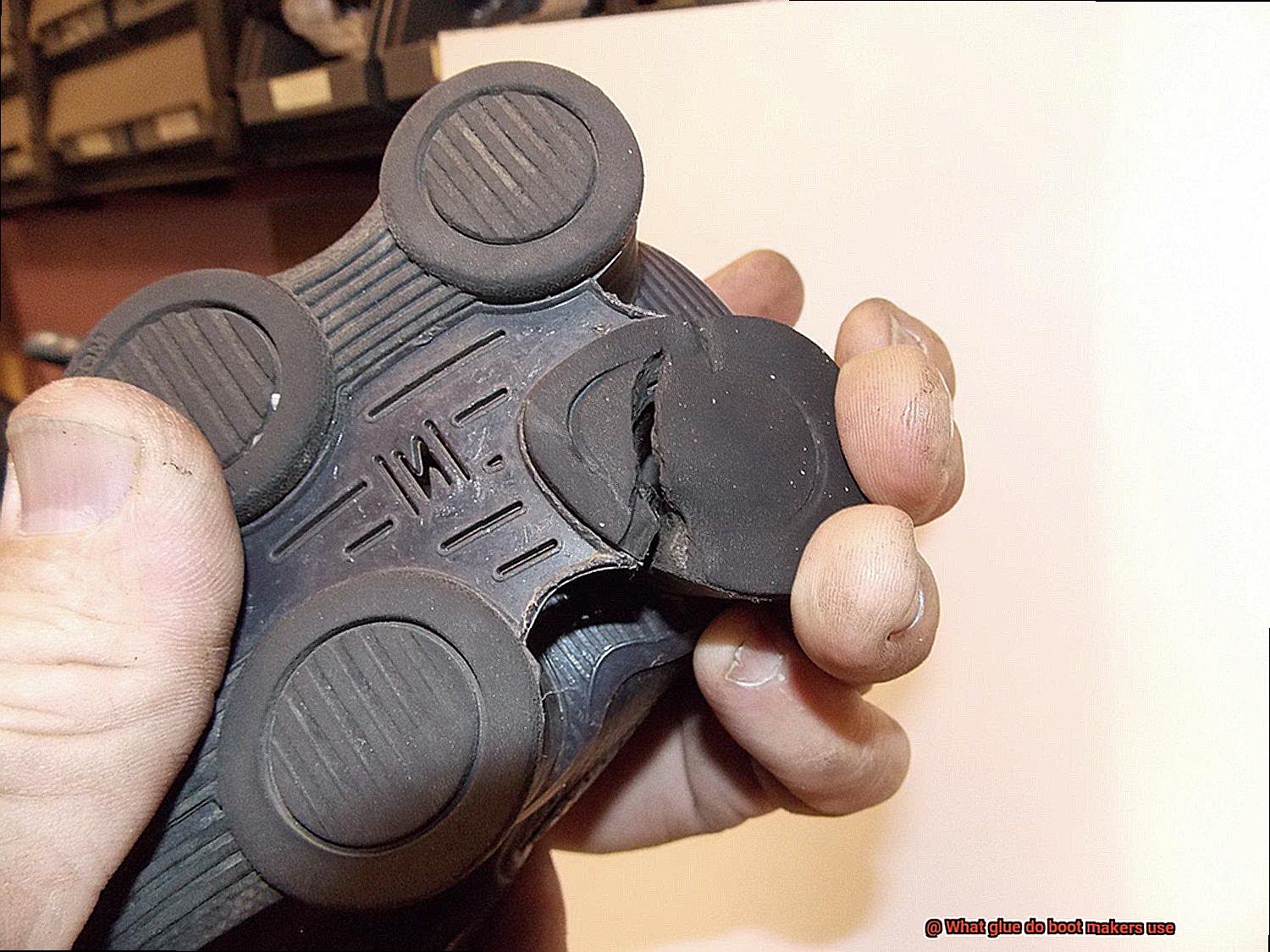
At its core, epoxy resin is a type of adhesive that plays a vital role in the manufacturing of boots and other footwear. It consists of two components – a resin and a hardener. When these two ingredients come together, a chemical reaction occurs, resulting in an adhesive that is both strong and durable.
One of the standout features of epoxy resin lies in its exceptional bonding capabilities. Regardless of whether you’re working with leather, rubber, or synthetic materials, epoxy resin provides an incredibly reliable bond. This versatility makes it an ideal choice for boot makers who often need to join different materials together seamlessly.
But the benefits of epoxy resin don’t stop at its bonding properties. This remarkable adhesive also boasts excellent resistance to water, chemicals, and heat. No matter how harsh the conditions may be, boots made with epoxy resin can withstand them all while maintaining their structural integrity. Rain, snow, or scorching temperatures are no match for the resilience of this adhesive.
Flexibility and elasticity are also key characteristics of epoxy resin that contribute to its unrivaled performance. Boots endure constant movement and stress during use, so it’s crucial that the adhesive can withstand bending and flexing without weakening the bond. Thanks to its flexibility, epoxy resin ensures that your boots remain intact even under the most demanding circumstances.
Another advantage worth mentioning is the relatively fast curing time of epoxy resin. Once the resin and hardener are combined, the adhesive begins to harden and cure swiftly. This allows boot makers to work efficiently and effectively, reducing the risk of parts shifting or moving during the bonding process.
To sum it up, epoxy resin is a versatile and durable adhesive that offers exceptional bonding capabilities, resistance to water and chemicals, flexibility, and quick curing time. Its use in boot making guarantees high-quality products that deliver long-lasting performance.
Benefits of Epoxy Resin
Epoxy resin is the glue that brings a whole host of benefits to the table.
First and foremost, let’s talk about the exceptional bonding strength of epoxy resin. It forms a bond that can withstand the toughest conditions, from long hikes in the wilderness to endless hours of dancing at music festivals. No matter how much you push your boots to their limits, they will stay intact thanks to the incredible strength of epoxy resin.
Versatility is another key advantage of epoxy resin. It can adapt to various materials commonly found in boots, including leather, rubber, fabric, and metal. Whether your boots are made of one material or a combination of different ones, epoxy resin has got you covered. It is the go-to adhesive for boot makers who work with different materials in their manufacturing process.
Now let’s talk about water resistance. Wet feet are no fun, especially when you’re out exploring nature or dancing in the rain. Luckily, epoxy resin is here to save the day. It acts as a shield, protecting your boots from moisture and ensuring that your feet stay dry no matter what Mother Nature throws at you.
Durability is another feather in epoxy resin’s cap. Your boots go through a lot – walking, running, climbing – and they need an adhesive that can keep up with their active lifestyle. Epoxy resin provides a long-lasting and reliable bond that can endure the wear and tear of everyday use. So go ahead and put your trust in epoxy resin – it won’t let you down.
But wait, there’s more. Epoxy resin is also known for its temperature resistance. Whether you’re hiking in scorching heat or trudging through snow, your boots will stay strong. Epoxy resin can handle both high and low temperatures without losing its adhesive properties or causing the bond to weaken. So you can focus on your adventures without worrying about your boots falling apart.
Let’s not forget about aesthetics. Epoxy resin has excellent gap-filling capabilities, filling in small gaps and imperfections between materials. This results in a seamless and visually pleasing finish, giving your boots that extra touch of style.
Last but not least, epoxy resin provides stability and dimensional accuracy. When used as an adhesive, it ensures that the materials being bonded maintain their original shape and alignment. This is crucial for boots that require precise construction and fit. With epoxy resin, you can trust that your boots will be comfortable and perfectly aligned to your feet.
Specialized Adhesives for Specific Materials
Specialized adhesives are essential in the world of boot making, where the bonding of different materials is crucial to create durable and comfortable footwear. Boot makers rely on a variety of adhesive superheroes, each with their unique powers, to ensure that every component stays firmly in place.
One of these superheroes is contact cement, a powerful adhesive that creates an instant bond when two surfaces are pressed together. Its flexibility makes it perfect for bonding materials like leather and rubber, allowing boots to withstand the bending and flexing that comes with everyday wear.
Another superhero in the realm of boot adhesives is epoxy, a two-part adhesive composed of a resin and a hardener. When mixed together, they create a bond resistant to heat, chemicals, and moisture. Epoxy is often used to bond metal components like eyelets or buckles, providing a long-lasting connection that can withstand heavy use.
Specialized adhesives are also employed for specific materials like Gore-Tex or other waterproof membranes. These adhesives not only create a watertight seal but also maintain flexibility. Precise application techniques are required to ensure proper bonding.
In addition to these specialized adhesives, boot makers may utilize general-purpose adhesives such as cyanoacrylate (super glue) or polyurethane adhesives for certain applications. These adhesives offer strong bonds and quick drying times, making them suitable for various materials and situations.
It’s worth noting that different boot makers may have their own preferred adhesives based on their experience and the materials they work with. The choice of adhesive may vary depending on the brand and type of boot being manufactured.
JAaIZa3pZMc” >
Conclusion
In conclusion, the glue used by boot makers is the unsung hero that ensures the longevity and resilience of their creations. Enter contact cement, the secret sauce that binds everything together with its lightning-fast bonding power. This versatile adhesive not only boasts incredible strength and durability but also offers the flexibility needed to withstand the rigors of boot making. It securely joins a plethora of materials commonly found in boots, guaranteeing they can brave heavy use and unforgiving environmental factors.
But wait, there’s more. Boot makers also rely on the remarkable properties of polyurethane glue. Praised throughout the industry, this adhesive packs a punch with its exceptional bonding strength and unwavering flexibility. Not to mention its resistance to water, temperature extremes, and ability to handle any material with ease. It’s no wonder polyurethane glue is a top choice for work boots or hiking boots that face grueling conditions head-on.
And let us not forget about epoxy resin – another star player in the world of boot making adhesives. With its outstanding bonding capabilities and versatility across different materials, it’s a go-to choice for many boot makers. Its water resistance, durability, temperature tolerance, gap-filling abilities, stability, and dimensional accuracy make it an all-around winner.
Boot makers may even employ specialized adhesives tailored specifically for materials like Gore-Tex or other waterproof membranes. These targeted solutions ensure maximum performance in challenging environments.
In essence, these adhesives are the backbone of every well-crafted boot – providing unyielding strength and durability in even the harshest conditions. They allow boot makers to weave their magic into each pair of boots so that they can accompany us on our wildest adventures without skipping a beat.

